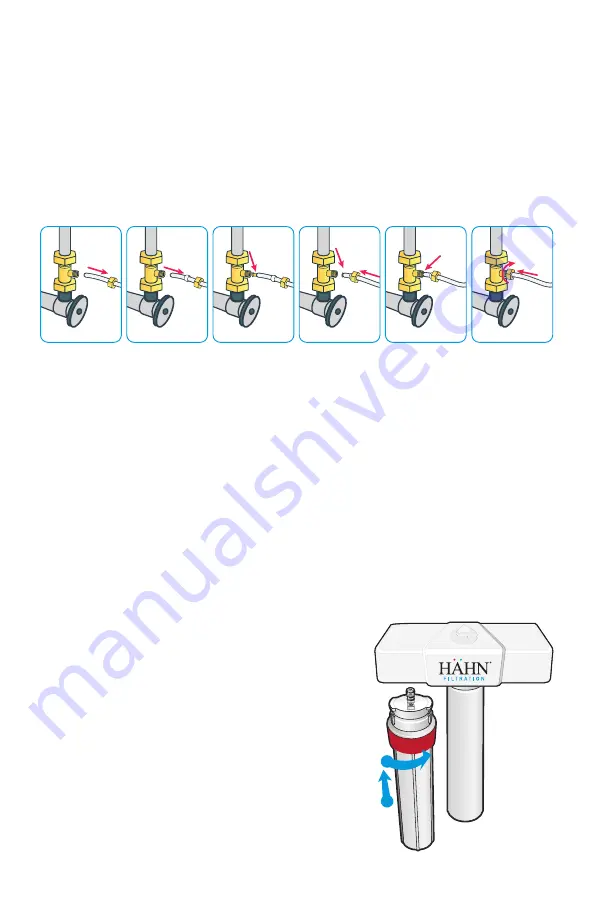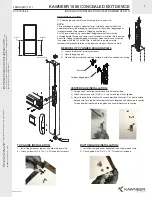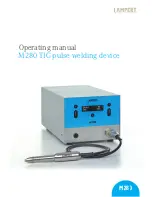
Step 1: Install Brass Fitting
1. Turn off the cold water supply to the sink.
2. Turn on the kitchen faucet to release pressure and allow water to drain from the line.
3. Disconnect the cold water line from the 1/2" threaded stem on the bottom of the
kitchen faucet. Attach threaded ends of supplied brass tee to the cold water supply
line and shut-off valve; tighten using an adjustable wrench.
4. Attach 1/4" white tube to the brass tee:
A. Slide the compression nut onto the white tubing.
B. Slide the plastic sleeve onto the white tube.
C. Place brass insert into the opening of white tube.
D. Push the tip of the white tubing into the opening of the brass tee.
E. Slide the compression nut onto the threads of the brass tee.
F. While holding the white tube in place, tighten the compression nut to compress
the plastic sleeve and create a seal.
NOTE:
Use a wrench to ensure complete seal.
Avoid over tightening.
5. Do not connect the other end at this time.
Step 2: Install System Manifold
1. Select an easily accessible area under the sink to
mount system manifold and remineralizer holder.
You want to allow at least a 4 to 6 inch clearance
below the filters to the floor to allow ample space
for filter changes. To help gauge the right location
for your system manifold, insert first and third
stage filter sumps into manifold. Insert sumps by
aligning top connection points and push up and to
the right until sumps are locked in.
2. Mark wall placement for mounting screws using
built-in bracket on back of manifold. Make sure
holes are as level as possible. Mark screw place-
ment of the remineralizer holder 1 or 2 inches from
the third stage sump to the right of the manifold.
A
B
C
D
E
F
2
1


































